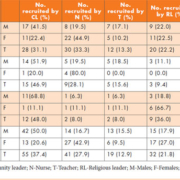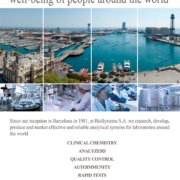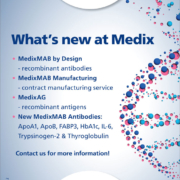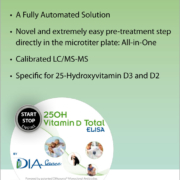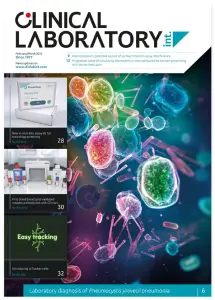Factors impacting on sample collection for urinary schistosomiasis research in Abeokuta, Nigeria
Sample collection is an important aspect of scientific work because it shapes, to a great extent, the study design and methodology, both of which may influence the outcomes of scientific research. However, often in scientific evaluations of studies which involve both field sample collection and laboratory work, only the laboratory research aspect receives serious attention, while other factors such as the socio-cultural, ecological and belief values of subjects who donate samples for laboratory studies are much less emphasised. These factors and how they play out in any particular study area are critical determinants of successful field sample collection especially in the developing countries.
by Dr Olufunmilola Ibironke, Dr Samuel Asaolu and Dr Clive Shiff
Urinary schistosomiasis is caused by a trematode worm, Schistosoma haematobium [1]. Infection with this parasite has been shown to be the commonest cause of haematuria and urogenital diseases in endemic areas. Thus, detection of haematuria in urine has been proposed as a valid indicator of schistosome infection, and has been widely adopted in many national schistosomiasis control programmes [2,3]. Diagnostic procedures in control programmes accordingly involve collection of urine samples from patients.
Most studies of urinary schistosomiasis in Nigeria and other endemic countries have targeted schoolchildren [4-8], because they represent the prime reservoir for the parasite, and children are amenable to mass chemotherapy [9]. However, studies have shown the debilitating effect of the parasite among adults in communities where it is endemic [10-13] and so this population also needs to be studied. As opposed to urine sample collection from children which is mostly done in schools, collection of urine from adults is difficult, particularly among persons who do not consider schistosomiasis as their major health problem when compared to malaria. In a school-based setting, after obtaining clearance from government health and school administrative authorities, researchers usually work with school teachers to get permission from pupils’ parents, and to educate the children involved in the study about how to follow urine sample collection instructions. However, for studies which involve adults, researchers, with the help of local health officers, would have to deal with patients directly to seek their individual involvement in the study, the acceptance of which depends on a number of the above mentioned factors.
Few studies have investigated the sociology of communities involved in such studies. We present here a study on urinary schistosomiasis in two villages in Ogun State, Nigeria, involving collection of urine samples from adults, to investigate the factors that drive their acceptance or refusal for inclusion in the study.
Methods and study sites
The study involved adults between the ages of 20 and 55 years who were mobilised to school halls in each village through the respective heads of the villages. Participants were informed of their right to accept or reject inclusion in the study. Many adults refused to come to school halls, many others who came rejected inclusion in the study. Some others accepted inclusion and collected urine sample containers but never came back while others accepted full participation. People in endemic communities show negative attitudes to urine sample collection for different reasons. To find out villagers’ attitudes to the urine sample collection process, we asked consenting participants why their friends or family refused to participate and in the process we identified some factors responsible for their attitudes. We also visited some households either to seek consent for inclusion or to understand reasons for refusing inclusion in the study.
This study was conducted in July, 2010, in Ogun State, Nigeria as a part of a study on the diagnosis of urinary schistosomiasis in six villages. For the purpose of comparison, two villages, Apojola located in Odeda Local Government Area (LGA), and Ogbere in Ijebu-east LGA, were selected. Apojola is located on Oyan Dam Reservoir. The inhabitants are all immigrant fishermen and their families, and are a mixture of Moslem Hausas and Christian Idomas. Awawa River serves Ogbere community. The inhabitants are mainly Christian Yorubas, and a mixture of farmers and Local Government Area civil servants. Ethical consideration, the data collection process, the population of each village, vegetation types and locations of each local government area have been reported previously [14].
Observations and discussion
Socio-cultural aspect
Several urinary schistosomiasis studies had been conducted in Nigeria, most of which involved urine sample collection, so there is a high level of awareness about the importance of control programmes. However, in the process of field studies there is often confusion in the minds of the participants leading to fear of exposure to strangers which was found to prevail among the villagers. Frequently researchers are mistaken for government agents visiting for revenue collections. If the researcher can work with members of the community to change these opinions it would likely improve level of cooperation for inclusion in the study. We explored this aspect in Apojola, a community located on the heavily schistosome-infested Oyan dam reservoir. We made the first attempt to recruit participants through the community leader, followed by the religious leader, a nurse and a school teacher. The number of participants recruited through the assistance of the different leaders according to age and gender are shown in Table 1a. In Table 1b, it was shown that the community leader is the most effective in helping to mobilise the villagers of both genders for urine collection.
There is also an increasing cynicism about the disease among adult patients in endemic communities. Many members of the communities who admit passing blood in the urine do not perceive it as an indication of a serious disease. They consider it as a sign of virility and puberty which is a familiar sign among adults in other villages around them. A few others who have experienced some discomfort and thought it might be a major health problem were either ashamed of their disease status or ashamed of bringing their ‘red’ urine. Past studies have noted that individuals’ perceptions on the aetiology and impact of urinary schistosomiasis differed with their levels of education and gender [13]. Lack of knowledge about the cause and effect of the disease affects patient’s turnout for sample collection and this in turn has a direct influence on field data coverage and research quality.
Apart from lack of health education on the cause of the disease, the willingness to participate in the urine sample collection process is seemingly greater among patients with some level of education than among the uneducated. We investigated how patient’s level of education impacts turnout for urine sample collection in Ogbere community. Ogbere inhabitants are a mixture of uneducated farmers, who have nought to six years of formal education, and the educated comprising teachers and Local Government Area civil servants, who have from seven to 16 years of formal education. In Table 2, data from both groups are presented for comparison to show turnout according to education level and gender.
This Table shows the percentage contributions by the Community Leader (CL), Nurse (N), Teacher (T) and Religious Leader (RL) on the total number of respondents. CL is best for mobilising males in the community (P = 0.00155). CL is also best for mobilising male and female with calculated P = 0.052 just higher than 0.05. N is best for mobilising females but this is not statistically significant.
Ecological aspect
Transmission of urinary schistosomiasis is through freshwater snails, Bulinus species, as intermediate hosts and varies with different ecological factors. In many endemic communities, the ecological factors which favour disease transmission also promote agricultural practices such as farming, cattle rearing and fishing. Therefore, transmission to humans often occurs as a result of irrigation systems for agricultural purposes or when visits are made to the rivers for washing and swimming. As such, the rate of transmission to humans varies, to a great extent, with occupation.
However, since diagnosis is by urine testing, many peasant farmers and fishermen who are thought to be the most impacted with S. haematobium because of frequent water contact may remain undiagnosed and untreated. Urine sample collection for the diagnosis of urinary schistosomiasis is preferably done between the hours of 10:00 and 14:00 for optimum egg passage [9]. These hours coincide with the time during which farmers go to farm and fishermen set nets for fish catching. This coincidence might affect turnout for sample collection and estimation of overall disease prevalence in the community.
To evaluate the impact of patient’s occupation on turnout for urine sample collection, we compared turnout of farmers and civil servants in Ogbere community. For statistical purpose, farmers, cattle rearers and fishermen are classified as farming, while students, teachers and local government workers are classified as civil servants, see Table 2. In total, there are 84 participants out of which 33 are farmers (39.2%) and 51 are civil servants (60.7%). In all, more women (79.8%) turned out for sample collection.
According to the community leader, the total adults’ population in Ogbere is 3121 and the ratio of farmers to civil servants is approximately 20:1.
Z- Distribution test was used to compare the response level between the two groups using the formula:
(see picture number 4)
where p is the difference of proportions, N1 = 149 = Educated population and N2 = 2972 = Uneducated population. At all levels of significance 0.05, 0.01 and 0.001, response from the educated civil servant population was significantly higher than response from the uneducated farmer population.
Belief structures
Christians in Apojola and Ogbere communities were relatively unhindered by religious belief regarding their willingness to come forward for education about the project and provision of their urine samples. However there was gender problem with urine collection among the Muslim families at Apojola. The Muslim families at Apojola have the culture of restricting married women within the family household compounds and forbiding male visitors of adolescent age and older from entering the compounds or visiting the women. In order to be able to collect urine samples from these Muslim women, the local community nurse and a female member of our research team were accompanied by a local female Muslim field assistant and interpreter before being allowed access to the compounds to explain the importance of the disease and purpose of the study.
Conclusion
This study attempts to find out patients‘ attitudes to scientific research especially during a field sample collection process and suggests possible reasons for rejection of inclusion in scientific research by patients. In general, this study showed that social and ecological values including educational background, occupation, religious practices and poor knowledge about the aims and objectives of the study, strongly influence turnout for urine sample collection. Therefore, such values are worth considering for a holistic understanding of the scientific study results.
References
1. Edungbola LD, Asaolu SO, Omonisi MK, Aiyedun BA. Schistosoma haematobium infection among schoolchildren in the Babana district, Kwara State, Nigeria. Afr J Med Sci 1988; 7: 187-193.
2. Koukounari A, Gabrielli AF, Toure S, Bosque-Oliva E, Zhang Y, Sellin B, Donnelly CA, Fenwick A, Webster JP. Schistosoma haematobium infection and morbidity before and after large-scale administration of praziquantel in Burkina Faso. J Infect Dis 2007; 196: 659-669.
3. Webster JP, Koukounari A, Lamberton PH, Stothard JR, Fenwick A. Evaluation and application of potential schistosome-associated morbidity markers within large-scale mass chemotherapy programmes. Parasitology 2009; 136: 1789-1799.
4. Abdel-Wahab MF, Esmat G, Ramzy I, Fouad R, Abdel-Rahman M, Yosery A, Narooz S, Strickland GT. Schistosoma haematobium infection in Egyptian schoolchildren: demonstration of both hepatic and urinary tract morbidity by ultrasonography. Trans R Soc Trop Med Hyg 1992; 86: 406-409.
5. Fenwick A, Webster JP, Bosque-Oliva E, Blair L, Fleming FM, Zhang Y, Garba A, Stothard JR, Gabrielli AF, Clements AC, Kabatereine NB, Toure S, Dembele R, Nyandindi U, Mwansa J et al. The Schistosomiasis Control Initiative (SCI): rationale, development and implementation from 2002-2008. Parasitology 2009; 136: 1719-1730.
6. French MD, Rollinson D, Basanez MG, Mgeni AF, Khamis IS, Stothard JR. School-based control of urinary schistosomiasis on Zanzibar, Tanzania: monitoring micro-haematuria with reagent strips as a rapid urological assessment. J Pediatr Urol 2007; 3: 364-368.
7. Nduka FO, Ajaero CM, Nwoke BE. Urinary schistosomiasis among school children in an endemic community in south-eastern Nigeria. Appl Parasitol 1995; 36: 34-40.
8. Okoli EI, Odaibo AB. Urinary schistosomiasis among schoolchildren in Ibadan, an urban community in south-western Nigeria. Trop Med Int Health 1999; 4: 308-315.
9. Ibironke OA, Phillips AE, Garba A, Lamine SM, Shiff C. Diagnosis of Schistosoma haematobium by detection of specific DNA fragments from filtered urine samples. Am J Trop Med Hyg 2011; 84: 998-1001.
10. Koukounari A, Webster JP, Donnelly CA, Bray BC, Naples J, Bosompem K, Shiff C. Sensitivities and specificities of diagnostic tests and infection prevalence of Schistosoma haematobium estimated from data on adults in villages northwest of Accra, Ghana. Am J Trop Med Hyg 2009; 80: 435-441.
11. Mostafa MH, Sheweita SA, O’Connor PJ. Relationship between schistosomiasis and bladder cancer. Clin Microbiol Rev 1999; 12: 97-111.
12. Mungadi IA,.Malami SA. Urinary bladder cancer and schistosomiasis in North-Western Nigeria. West Afr J Med 2007; 26: 226-229.
13. Sarkinfada F, Oyebanji AA, Sadiq IA, Ilyasu Z. Urinary schistosomiasis in the Danjarima community in Kano, Nigeria. J Infect Dev Ctries 2009; 3: 452-457.
14. Ibironke O, Koukounari A, Asaolu S, Moustaki I, Shiff C. Validation of a new test for Schistosoma haematobium based on detection of Dra1 DNA fragments in urine: evaluation through latent class analysis. PLoS Negl Trop Dis 2012; 6: e1464.
The authors
Dr Olufunmiola Ibironke*
Cell and DNA Repository
Rutgers, The State University of New Jersey
New Brunswick
New Jersey, USA
e-mail: oai5@rutgers.edu
Dr Clive Shiff
Department of Molecular Microbiology and Immunology
Johns Hopkins Bloomberg School of Public Health
Baltimore, MD, USA
e-mail: cshiff@jhsph.edu
Dr Samuel Asaolu
Department of Zoology
Obafemi Awolowo University
Ile-Ife
Nigeria
*Corresponding author



